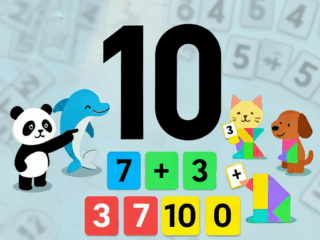Error-oriented learning means that incorrect answers are not ignored but
deliberately practiced again. Instead of repeating what is already known,
children focus practice exactly where it is needed.
1) Scientific Background
1.1 The Learning Value of Errors
- Error-based learning: Research shows that analyzing and correcting mistakes leads to deeper learning than only focusing on correct responses.
(Metcalfe, 2017) - Testing effect: Retrieval practice—even when answers are wrong—enhances later memory more than passive study.
(Roediger & Butler, 2011) - Productive failure: Struggling and making errors before instruction fosters long-term understanding.
(Kapur, 2008)
1.2 Cognitive Mechanisms
- Attention to feedback: Errors trigger increased attention and activate error-monitoring brain regions.
(Holroyd & Coles, 2002) - Memory strengthening: Correcting wrong answers creates stronger memory traces than studying correct answers alone.
(Butterfield & Metcalfe, 2013)
2) Didactic Principles
| Principle | Implementation |
|---|---|
| Identify mistakes | Systematically detect where errors occur—through observation, quizzes, or digital tools. |
| Targeted repetition | Wrong items are repeated immediately or soon after, until fluency is achieved. |
| Feedback is key | Provide clear, immediate correction and—if needed—explain the underlying strategy. |
| Focus on patterns | Look for recurring errors (e.g., always confusing 6+7) and train those systematically. |
| Safe error culture | Errors are framed positively as learning opportunities, not failures. |
Error-oriented practice aligns with formative assessment: instruction adapts to the learner’s actual needs instead of rehearsing what is already mastered.
3) Practice Box: Error-Focused Activities
3.1 At Home
- Wrong-card recycling: In flashcard practice, place wrong answers back into the deck’s beginning. Keep repeating until answered correctly twice in a row.
- “Fix it” challenge: After a wrong answer, the child explains why it was wrong and then solves a similar example correctly.
- Error journal: Keep a small notebook of “tricky facts” (e.g., 7+8, 9–6) and review them daily.
3.2 In the Classroom
- Error walls: Collect common mistakes and discuss them together, turning them into visible learning opportunities.
- Adaptive practice: Use digital tools that automatically repeat incorrect tasks more frequently.
- Peer correction: Students exchange answers, explain errors to each other, and practice correct strategies together.
3.3 Digital Tools
Many modern learning apps implement error-based algorithms: wrong answers reappear more frequently until mastered.
This mirrors both the Leitner system and
principles of spaced repetition.
4) Key Takeaway
Error-oriented learning turns mistakes into powerful stepping stones.
Instead of wasting time on what is already known, learners strengthen exactly the weak spots.
With immediate feedback, safe error culture, and systematic repetition, mistakes become the most valuable
practice signals in learning mathematics.
References & Further Reading
- Metcalfe, J. (2017) – Learning from errors.
- Roediger, H. L., & Butler, A. C. (2011) – Testing effect.
- Kapur, M. (2008) – Productive failure.
- Holroyd, C. B., & Coles, M. G. H. (2002) – Error monitoring in the brain.
- Butterfield, B., & Metcalfe, J. (2013) – Error correction and memory.




